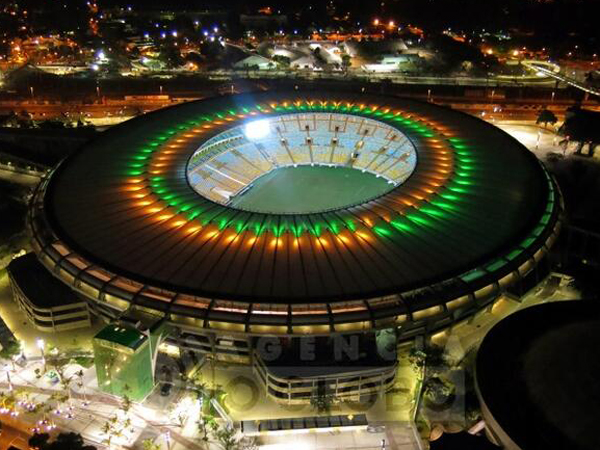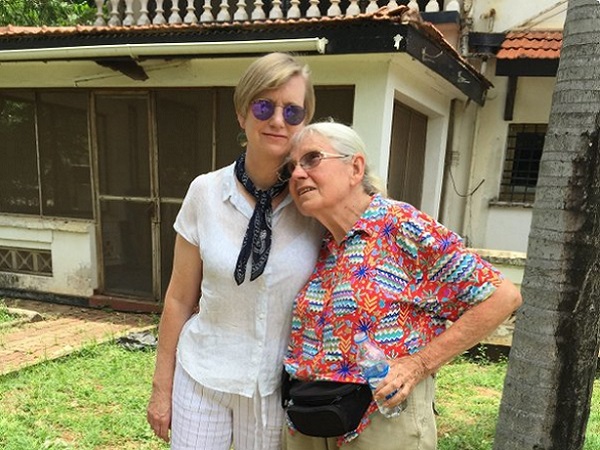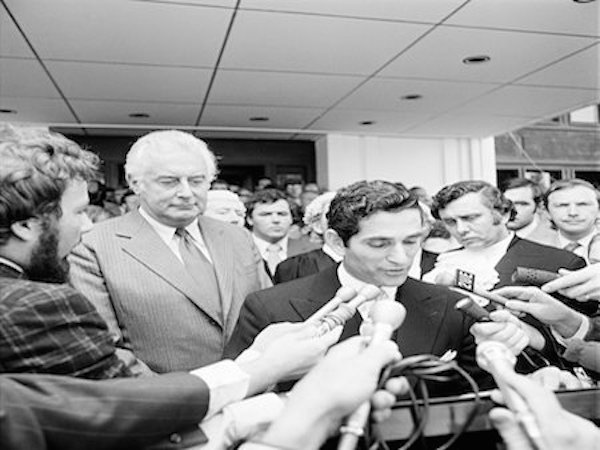In a two-part series, upstart will take you through Brazil’s 12 World Cup host cities and inform you on what to expect in terms of culture, tourism and – of course – football.
Rio
Stadium: Estádio do Maracanã (Capacity 76,935)
What more can be said about one of the world’s most famous cities? When you think of Rio, you think of a vast landscape with white beaches and sweeping mountain planes. Main sights in Rio includes the Copacabana and Ipanema beaches, as well as Sugarloaf mountain and the world famous Christ The Redeemer statue.
Lighting in the Maracana Stadium in Rio tested ahead of World Cup http://t.co/uc1x7XpcT8 pic.twitter.com/0B8OIa7YAL
— Kerala Opinion (@KeralaOpinion) May 18, 2014
Along with Wembley and the Azteca, the Maracana is one of the most well-known football stadiums in the world. It hosted the 1950 World Cup final, with nearly 200,000 people in attendance, but with the ground recenty renovated, it’ll host the final this time with a capacity of just under 77,000.
Brasilia
Stadium: Estádio Nacional Mané Garrincha (Capacity 72,788)
Out of the 12 host cities, Brasilia is the newest of them all having only been founded in April 1960 as Brazil’s capital. The modern structures that adorn the city streets are what define this metropolis and visitors to Brasilia for the World Cup will be greeted with a range of structures in which to explore. The city is also defined into various clusters, with the residential and hotel areas being separated. Brasilia is unique to say the least.
Its stadium was renovated specifically for the World Cup and, boasting a capacity of over 70,000, it represents the biggest stadium to host games besides the Maracana. Built in 1974, it hosts fourth-division side Brasilia FC and was the site of Australia’s humiliating 6-0 defeat to Brazil last year.
Sao Paulo
Stadium: Arena Corinthians (Capacity 68,034)
You can only look at this city and marvel at it. Known globally as one of the most dense cities, Sao Paulo’s gems are often hidden away from the main roads. What the Champs Elysees is to Paris, the Avenue Paulista is to Sao Paulo. This stretch of road will be packed with World Cup tourists with its many shopping centres, bars and even the occasional museum taking the fancy of any passersby. If you go to Brazil, you simply must see Sao Paulo.
Its completely new stadium, Arena Corinthians, is only tipped to open a few weeks before it hosts the opening game between Brazil and Croatia. Costing close to AUD$450 million, the stadium often referred to as the ‘shoe box’ will play host to crucial clashes such as Uruguay v England and Netherlands v Chile. After the World Cup has finished, the stadium will play host to power club Corinthians and its legions of fans.
Fortaleza
Stadium: Castelao (Capacity 67,037)
Located in the North-East of Brazil, this emerging seaside town will make for a picturesque setting for football fans attending the World Cup. Over the past decade, Fortaleza has enjoyed a renaissance of sorts, with thousands of Brazilians making a holiday on the sandy beaches and minimal rain that it enjoys. Unfortunately, petty crime has become a bigger issue as visitor numbers soar and, as such, local police have been trying to curtail any issues before tourist descend on its streets in the weeks to come.
The Arena Castelao is one of the few venues that played host to the Confederations Cup in 2013 and thus has been ready for football’s showpiece event since 2012. Originally opened in November of 1973, this impressive stadium has hosted many concerts and festivals after it reopened its doors. It also is the home of second division side Ceara.
Belo Horizonte
Stadium: Estadio Mineirao (Capacity 62,547)
A city completely surrounded by mountains, Belo Horizonte offers visitors plenty of options amongst attending World Cup matches. The CBD area is immaculately planned out and many Brazilians who live in this area take pride in its city centre. Portuguese for “beautiful horizon”, Belo Horizonte has a tropical climate and temperatures will generally hover around the 25-degree mark during the World Cup.
Originally opened in the mid-sixties, its stadium was renovated in time for last year’s Confederations Cup. The old Mineirao hosted as many as 132,834 people for a club game in 1997, but in favour of more modern facilities, this capacity has been significantly downgraded. The stadium will also host some events during the 2016 Olympic Games.
Porto Alegre
Stadium: Estadio Beira-Rio (Capacity 51,300)
Destination: Located by the Guaiba Lake, Porto Alegre is the coldest of the twelve cities to host World Cup matches. Amongst many things this place is renowned for, it possess the Rua Gonçalo de Carvalho – a street line by trees that many believe is the most picturesque street in the world. Porto Alegre will host many games at its lakeside stadium including Australia’s big match against the Netherlands.
Hosting local side Sport Club Internacional, the Beira-Rio was recently renovated and officially opened in March this year. Its striking red seats and cauldron-like atmosphere will make it one of the best stadiums to play football at in Brazil. Despite only holding around 51,000 people, you can be sure it will be full for its five World Cup games.
Laurence Rosen is a first-year journalism student at Monash University who will be journeying to Brazil for the 2014 FIFA World Cup. You can follow his trip on Twitter: @LaurenceRosen







